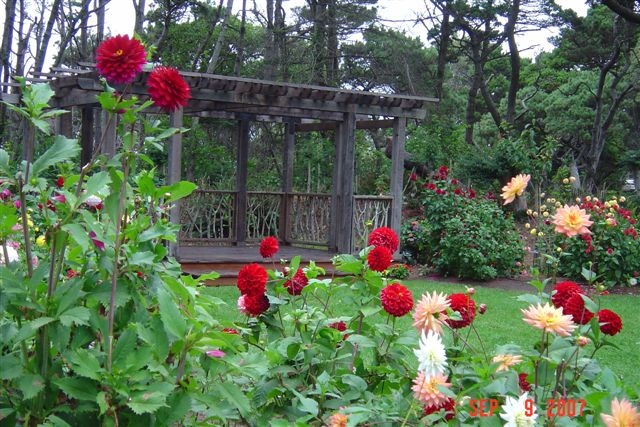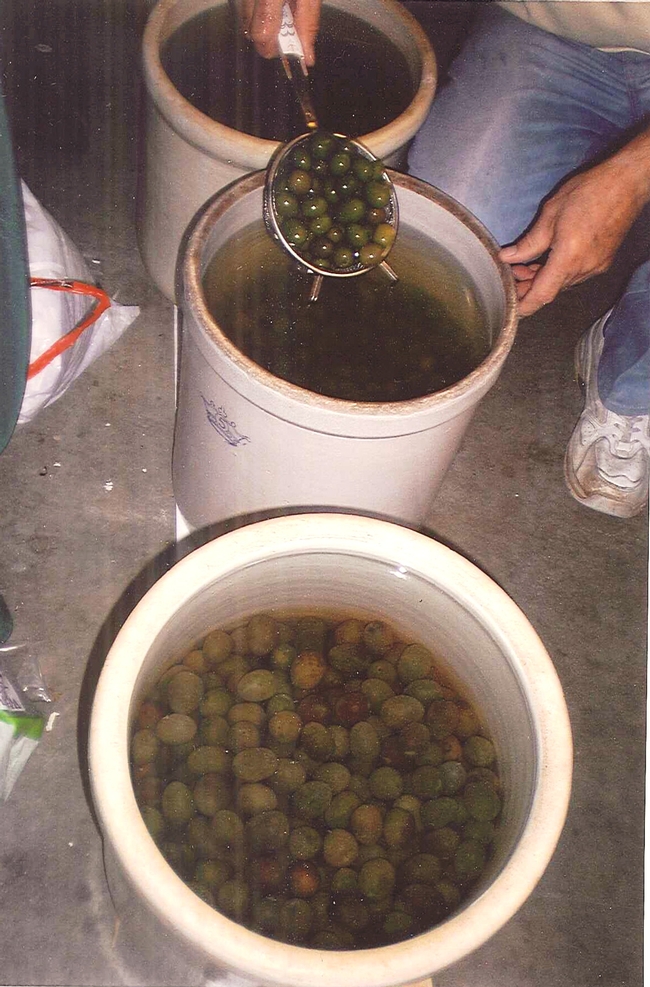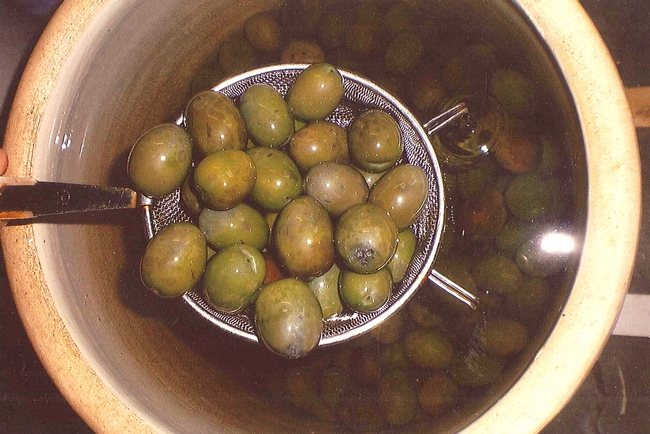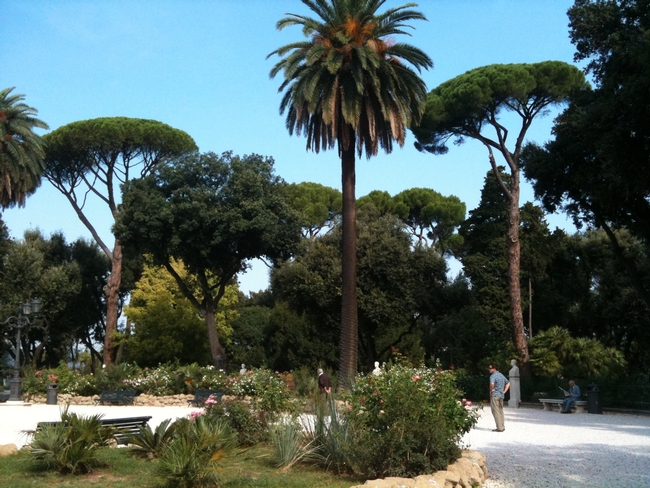Posts Tagged: Italian
Garden Art
Garden art definitely enhances any garden no matter what is planted within in its boundaries. Over the years, we have enjoyed the art in garden tours, botanical gardens, friends gardens and even in our own garden. Garden art can consist of fountains, statuary, vertical planted walls, containers, metal signs, ceramic artwork, birdhouses, and unusual designed yard furniture.
In Italy, some of the elaborate gardens have magnificent fountains with different spray patterns, huge statuary or monuments of saints, famous people and angels. Often cathedrals have small walled in gardens that hold carved crosses and statuary that honors deceased priests or conquerors of the town. Fontarronco, a garden near Arezzo, in Tuscany, has exquisite tiled water fountains and tiled walkways. This garden is highlighted with flowers to cut for the house, vegetables for the table and artistic arbors providing shade from the intense heat. It is a simple garden that is breathtaking due to the colors of plants and tile work.
Often Botanical gardens will have hand made wooden or iron gates, windmills, carved benches and waterfalls. Around every corner there will be a surprise. One of my favorite Botanical gardens is in Fort Bragg. It is divided up into “rooms” and if you stay on the 3 mile path, you will end up at the ocean. The dahlia garden is my favorite spot. The hand made benches are to sit upon while surrounded by a rainbow of color in this sea of dahlias. A three sided gazebo anchors the dahlia garden where occasional weddings are held. The gate leading to this garden is a statement itself.
In our yard, the garden art is mostly cement faces, angels, and rabbits. Occasionally metal dragonflies can be found scattered throughout, In the winter when the garden is sleeping, the artwork still allows us to appreciate the views from every window.

Ornate garden gate. (photos by Sharon Rico)

Dahlias enhance beauty of the garden gate.
Italian Olives
This fall the search for olives began. As my husband and I drove around Solano County, we noticed the barren olive trees. Olives are like many other fruits, they have good production years and not so good years. The unpredictable weather this past spring most likely affected fruit set.
Curing olives is a yearly Italian heritage tradition at our house. My husband’s grandfather and mother cured olives, so the family would have olives to eat and cook with during the holidays. Before meeting my husband, I thought olives were a table decoration, then learned they were a whole food and could be a WHOLE meal. In Italy, olives are found in barrels at the front door of grocery stores and also peddled on the streets wrapped in newspaper shaped into a cone.
In the past, we have picked olives on the property of our friends or family. Last year, we bought them in Oroville and this year they came from Corning. The olives this year are beautiful, large and shiny green. The type of olive my husband cures is called a Sevillano olive (Sicillian-style). Olives on the tree, at any stage of ripeness, are very bitter and inedible because of the oleuropein that is abundant in its flesh. The curing process removes the bitterness. There is quite a science to curing olives and definitely a time commitment. Once we obtain olives, the next 7 to 10 days are about preparing them to be eatable. When the curing process ends, they are bottled and pressured canned. In the past, he has seasoned them with fresh rosemary, garlic cloves, celery, red pepper flakes and even added vinegar. There are many ways to change the flavor, but our preference is leaving them plain in salted water.
There is great information available on the web from UC Davis, on safe methods for curing olives (Publication #8267). It takes a lot of time and is a lot of work, but we know our holidays will be celebrated again this year with delicious, home-cured Italian olives; a labor of love!
Stone pines: Quintessentially Italian
Earlier this month, I was lucky enough to spend two weeks touring Italy. It was a glorious trip, filled with pasta, wine, more pasta and more wine. When not eating and drinking, I made a point of noticing the flora. What I noticed was fascinating: What grows wild in Italy is largely the same as what grows wild right here in Solano County. No big surprise, really. We share the Mediterranean climate, and the regions we saw — from Rome to Bologna — are studded with farms and oak chaparral. It felt just like home.
There was one type of tree that stood out, however: the quintessentially Italian stone pines (Pinus pinea). I heard them called “Umbrella Trees” by a tour guide at the Roman Forum. The oldest of these trees stand quite tall, throwing their umbrella-like profile over the ruins in Rome and farmhouses in Tuscany. The trees are most often found along Italy’s two coastlines.
Stone pines are native to the Mediterranean region, and have been cultivated there for at least 6,000 years. The trees are slow growing, but can eventually reach 80 feet in height. Bushy when young, the umbrella-shaped canopy comes along in the trees’ middle age, and can be up to 200 feet in diameter. The cones of stone pines bear delicious pine nuts. Sadly, the western conifer seed bug (Leptoglossus occidentalis) was accidentally imported with timber to northern Italy in the 1990s. The pest has since spread across Europe, feeding on the sap of developing conifer cones. Its sap-sucking causes the developing seeds to wither. It has destroyed most of the pine nut seeds in Italy, and threatens Pinus pinea in its native habitats. Consequently, most pine nuts you see in stores are grown in China.
Lo and behold, stone pines do well in Solano’s climate zones. Before you plant one, check on the pests and disorders of pines in our region at http://www.ipm.ucdavis.edu/PMG/GARDEN/PLANTS/pine.html
The Golden Girls
When you encounter a "Golden Girl" in your backyard, there's one thing to do: grab the camera.The "Golden Girl," in this case, is an Italian honey...

Honey bee on lavender. (Photo by Kathy Keatley Garvey)
More Precious Than Gold
Ever see a golden bee that takes your breath away? They're most likely Cordovans, a subspecies of the Italian race. The one below is a...

(c) Kathy Keatley Garvey

(c) Kathy Keatley Garvey

(c) Kathy Keatley Garvey




